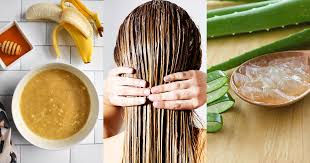Get to Know Your Hair Product Ingredients: A Simple Guide
- matt38760
- May 9
- 4 min read
Navigating the world of hair product labels can be a bit like trying to decipher a secret code, can't it? With so many ingredients and terms, it's easy to feel overwhelmed and unsure about what you're actually putting on your hair. But fear not, I'm here to help demystify those hair terms and empower you with the know-how to make client informed choices. In this simple guide, we'll break down those complex labels and get to the heart of understanding hair products without the marketing fluff. Let's dive in and uncover some essential hair care tips that will have you feeling confident and informed about your next hair care purchase!

Understanding Hair Product Labels
Let's start by breaking down those mysterious hair product labels. Understanding what's in your hair care products is crucial for making informed decisions about your hair health.
Demystifying Common Hair Terms
When you pick up a hair product, you're often met with a slew of scientific-sounding terms. Let's unpack some of these common ingredients and what they actually do for your hair.
Sulfates are cleansing agents that create that satisfying lather, but they can be harsh on some hair types. Silicones provide a smooth, shiny finish but may build up over time.
Parabens are preservatives that extend shelf life, while keratin is a protein that strengthens hair. Understanding these terms helps you choose products that align with your hair goals.
Remember, not all ingredients are suitable for every hair type. What works for straight hair might not be ideal for curly locks.
Making Client Informed Choices
Armed with knowledge about hair product ingredients, you're ready to make smarter choices for your hair care routine.
Start by identifying your hair type and specific concerns. Are you dealing with dryness, frizz, or colour-treated hair? This will guide your product selection.
Next, learn to read the ingredient list. Ingredients are listed in order of concentration, so the first few are the most prominent in the product.
Don't be swayed by marketing claims alone. Look for products that address your specific hair needs with ingredients you now understand.
Lastly, don't be afraid to experiment. What works for others might not work for you, and that's okay. Trust your hair's response to find your perfect product match.
Key Hair Product Ingredients
Now that we've demystified labels, let's dive into the ingredients themselves. Knowing what to look for (and what to avoid) can make a world of difference in your hair care routine.
Essential Oils and Extracts
Natural oils and extracts can be powerhouses for hair health, offering a range of benefits without harsh chemicals.
Argan oil is rich in vitamin E and fatty acids, providing deep moisture and shine. It's particularly beneficial for dry or frizzy hair.
Coconut oil is known for its penetrating properties, helping to prevent protein loss in hair. It's great for strengthening and protecting hair from damage.
Tea tree oil has antifungal properties, making it excellent for maintaining a healthy scalp. Jojoba oil closely mimics our natural scalp oils, helping to balance oil production.
Remember, a little goes a long way with these potent ingredients. Start with small amounts to see how your hair responds.
Harmful Additives to Avoid
While many ingredients are beneficial, some can potentially harm your hair or overall health. It's important to be aware of these and make informed decisions.
Sulfates (like Sodium Lauryl Sulfate) can strip natural oils, leading to dryness. They're particularly harsh for curly or colour-treated hair.
Formaldehyde and formaldehyde-releasing preservatives have been linked to health concerns. Look out for ingredients like DMDM Hydantoin or Quaternium-15.
Certain alcohols (like ethanol or propanol) can be drying, especially for already dry or damaged hair. However, fatty alcohols (cetyl or stearyl alcohol) can be beneficial.
Synthetic fragrances may cause irritation for sensitive scalps. If you're prone to reactions, opt for fragrance-free or naturally scented products.
Always patch test new products, especially if you have sensitive skin or are prone to allergies.

Practical Hair Care Tips
Now that you're equipped with knowledge about hair product ingredients, let's look at how to put this information into practice for healthier, happier hair.
Selecting the Right Products
Choosing the right hair products doesn't have to be overwhelming. Here's a simple guide to help you make the best choices for your hair:
Identify your hair type and concerns (oily, dry, curly, colour-treated, etc.).
Look for products specifically formulated for your hair type.
Read ingredient lists, focusing on the first few ingredients which make up the bulk of the product.
Avoid harmful additives that don't align with your hair goals.
Start with a basic routine (shampoo, conditioner, and perhaps a leave-in treatment) and adjust as needed.
Remember, expensive doesn't always mean better. Many affordable products contain high-quality ingredients that can work wonders for your hair.
Don't be afraid to mix and match products from different brands to create your perfect hair care cocktail. What works for your shampoo might not be the best choice for your styling products.
Hair Care Services
While understanding hair product ingredients is empowering, sometimes professional expertise is necessary to achieve your hair goals.
At Rebecca Samantha, we offer personalised hair care consultations to help you navigate the world of hair products. Our experienced stylist can assess your hair type, discuss your concerns, and recommend a tailored hair care routine.
We also offer in-salon treatments using professional-grade products that can give your hair a boost. From deep conditioning treatments to colour protection services, we have solutions for every hair need.
Remember, regular trims and professional treatments can significantly improve your hair's health and appearance. Book an appointment today to get expert advice and care for your unique hair needs.
Your journey to healthier, more beautiful hair starts with understanding what you're putting on it. Armed with this knowledge, you're now ready to make informed choices that will keep your locks looking their best!



Comments